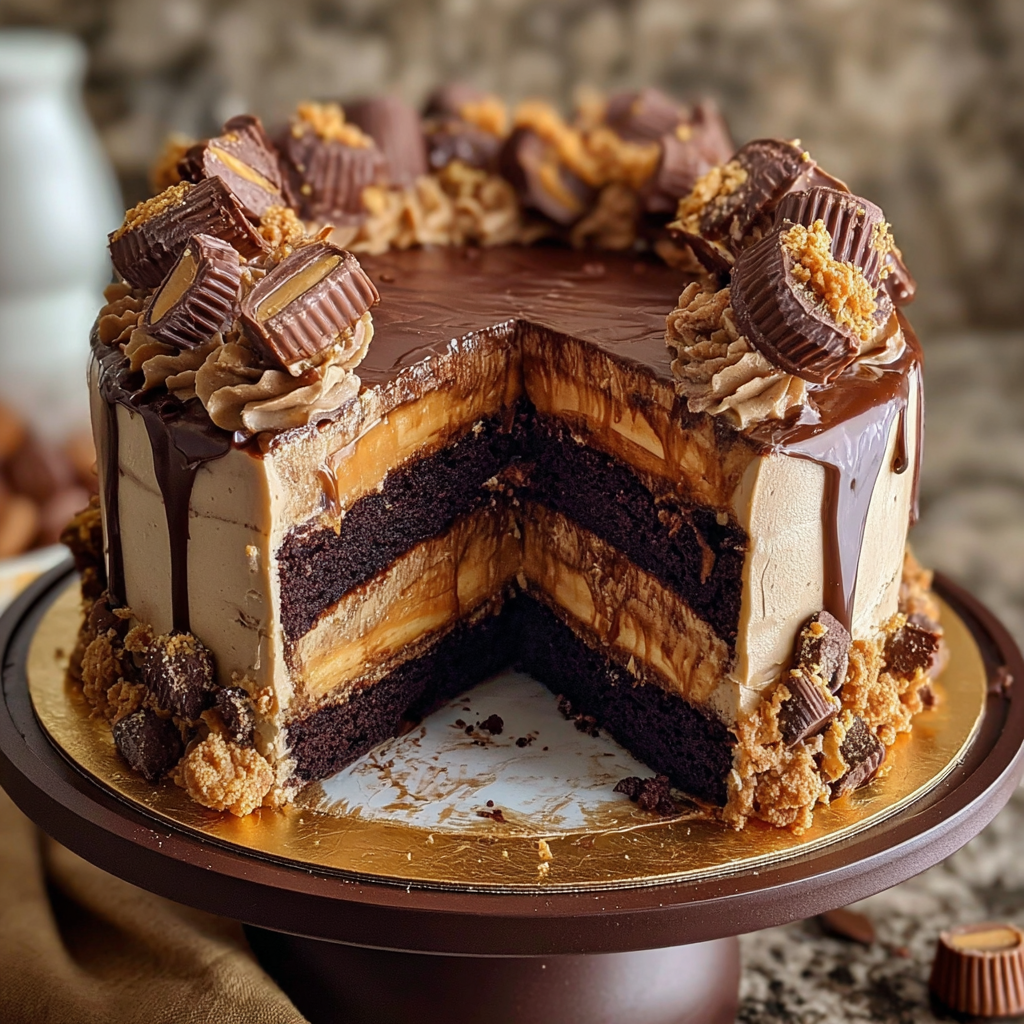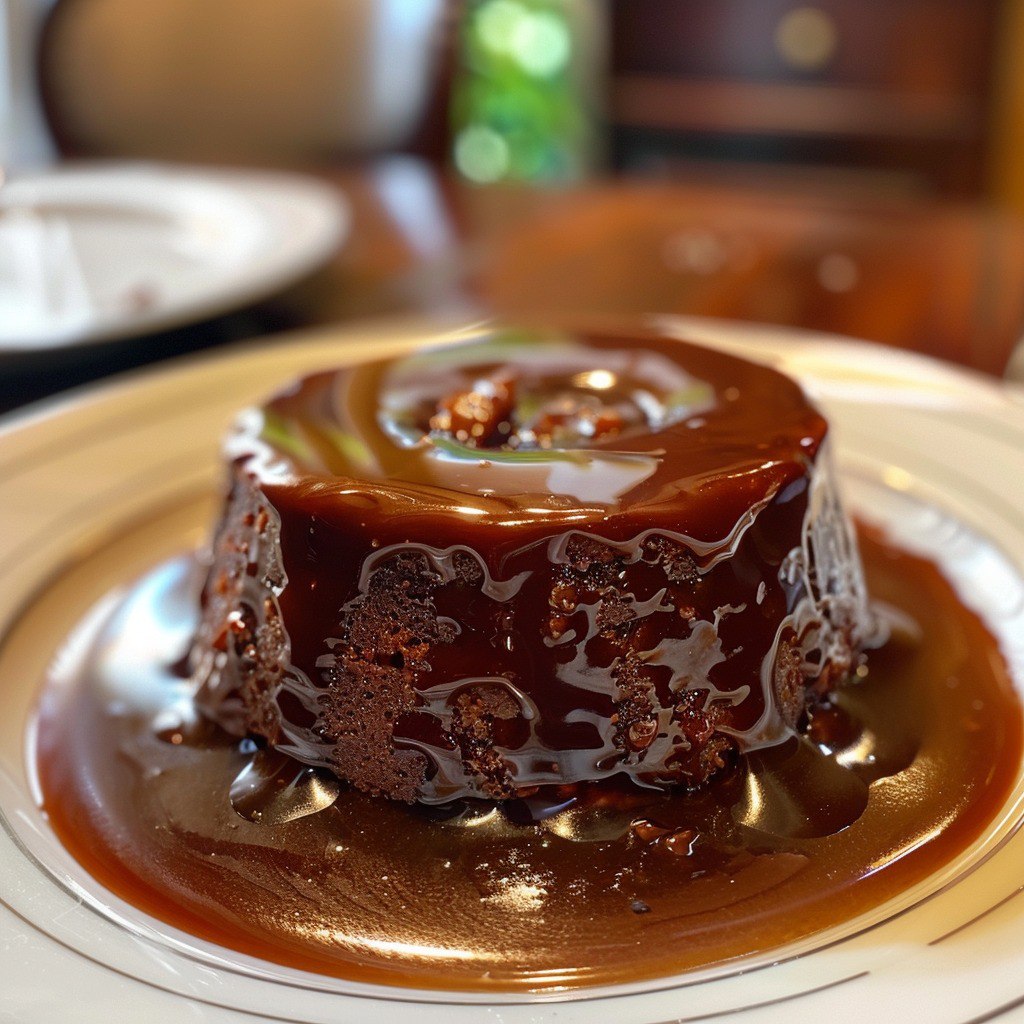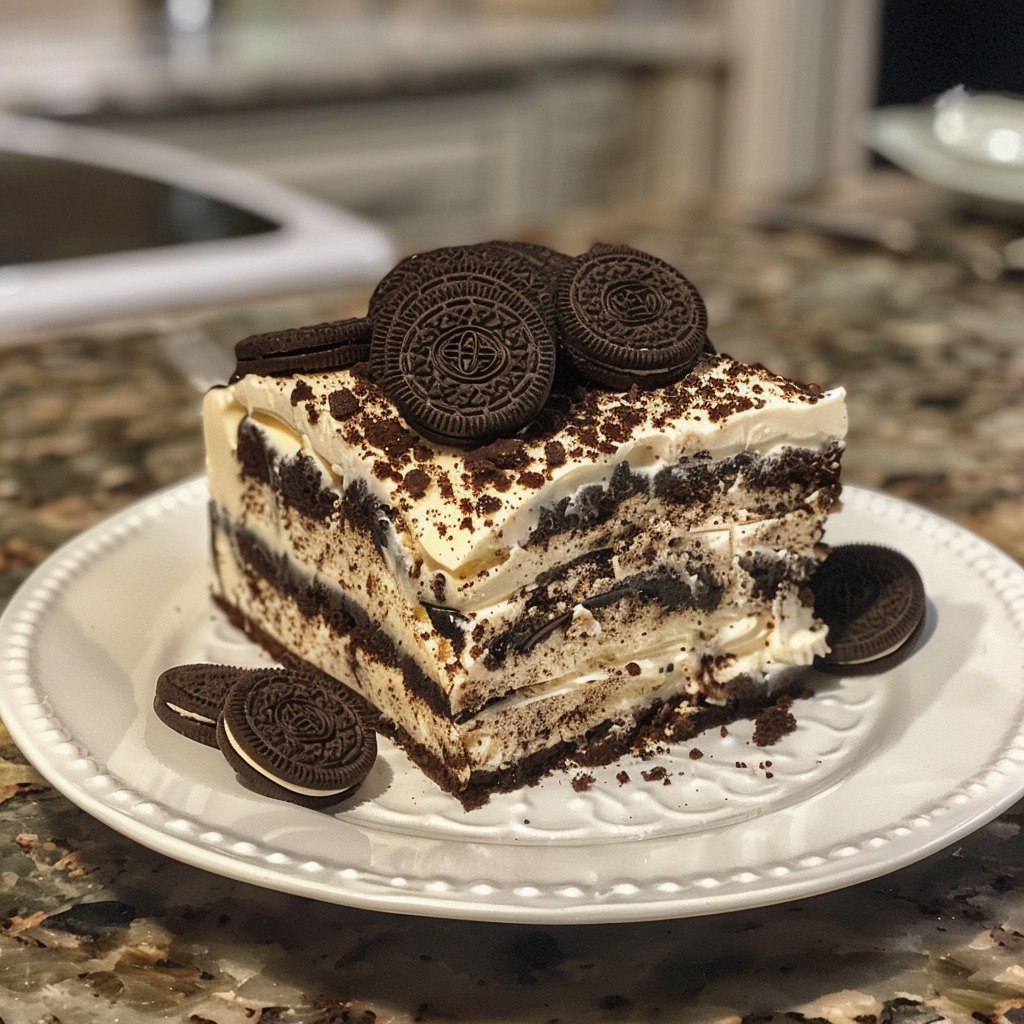Introduction
Nothing beats the refreshing taste of a perfectly baked lemon buttermilk pound cake on a sunny afternoon. Moreover, when you add a tangy lemon glaze on top, you create a dessert that’s simply irresistible. This classic American cake combines the rich, buttery texture of traditional pound cake with the bright, zesty flavors of fresh lemons.
Additionally, the buttermilk in this recipe creates an incredibly moist crumb that melts in your mouth. Furthermore, the lemon glaze adds an extra layer of citrus flavor that perfectly complements the cake’s tender texture. Whether you’re hosting a dinner party or simply treating yourself to something special, this lemon buttermilk pound cake is guaranteed to impress.
Why You’ll Love This Lemon Buttermilk Pound Cake
This exceptional lemon buttermilk pound cake offers numerous benefits that make it a standout dessert choice. Here’s why this recipe will become your new favorite:
• It’s incredibly moist and tender: The buttermilk creates a soft, velvety texture that’s far superior to regular pound cakes.
• Perfect balance of flavors: The tangy lemon perfectly complements the rich, buttery cake base without being overwhelming.
• Simple ingredients: Most items are likely already in your pantry, making this an accessible recipe for any home baker.
• Impressive presentation: The beautiful bundt shape and glossy lemon glaze make this cake look professionally made.
• Long-lasting freshness: Thanks to the buttermilk, this cake stays moist for days when properly stored.
• Versatile serving options: Enjoy it as dessert, with afternoon tea, or as a special breakfast treat.
Furthermore, this recipe is forgiving for beginners yet sophisticated enough for experienced bakers. Additionally, the preparation time is minimal, requiring only about 20 minutes of active work before the oven does the rest.
Essential Ingredients for the Perfect Lemon Pound Cake
Creating the ultimate lemon buttermilk pound cake starts with selecting quality ingredients. Moreover, understanding the role each component plays will help you achieve bakery-quality results every time.
Primary Cake Ingredients
The foundation of this lemon pound cake relies on these essential components:
Unsalted butter (1 cup, softened): Forms the rich, tender crumb that makes pound cake so beloved. Additionally, using unsalted butter allows you to control the salt content precisely.
Granulated sugar (2 cups): Creates sweetness while helping to cream with butter for a light, fluffy texture. Furthermore, sugar contributes to the cake’s golden color during baking.
Large eggs (4): Provide structure, moisture, and richness. Moreover, eggs help bind all ingredients together while adding to the cake’s luxurious texture.
All-purpose flour (3 cups): Forms the cake’s structure. However, be careful not to overmix once flour is added to prevent a tough texture.
Buttermilk (1 cup): The secret ingredient that makes this lemon buttermilk pound cake exceptionally moist and tangy. Additionally, buttermilk’s acidity helps tenderize the gluten in flour.
Lemon Components
The citrus elements are what make this lemon pound cake truly special:
Fresh lemon zest (from 2 lemons): Provides intense lemon flavor without adding extra liquid. Moreover, the oils in the zest offer a more complex flavor than juice alone.
Fresh lemon juice (from 1 lemon): Adds bright acidity that balances the rich butter and sugar. Furthermore, fresh juice tastes significantly better than bottled alternatives.
Leavening and Seasoning
These ingredients ensure your cake rises properly and tastes perfectly balanced:
Baking powder (1/2 teaspoon): Provides lift and helps create a tender crumb.
Baking soda (1/2 teaspoon): Works with the buttermilk’s acidity to create additional rise and tenderness.
Salt (1/2 teaspoon): Enhances all other flavors and balances the sweetness.
Step-by-Step Guide to Making Lemon Buttermilk Pound Cake
Creating this spectacular lemon buttermilk pound cake involves several important steps. However, following this detailed guide ensures perfect results every time.
Step 1: Preparation and Setup
Proper preparation sets the foundation for baking success. Additionally, having everything ready before you start mixing prevents mistakes and ensures smooth workflow.
Preheat your oven: Set temperature to 325°F (160°C). Moreover, this moderate temperature allows the cake to bake evenly without browning too quickly.
Prepare your bundt pan: Thoroughly grease every crevice with butter or cooking spray. Furthermore, dust with flour, tapping out excess to ensure easy release after baking.
Organize ingredients: Measure all components and bring butter and eggs to room temperature. Additionally, room temperature ingredients blend more easily and create better texture.
Zest and juice lemons: Complete this task first since you’ll need both zest and juice at different stages. Moreover, having fresh citrus ready ensures you don’t interrupt the mixing process.
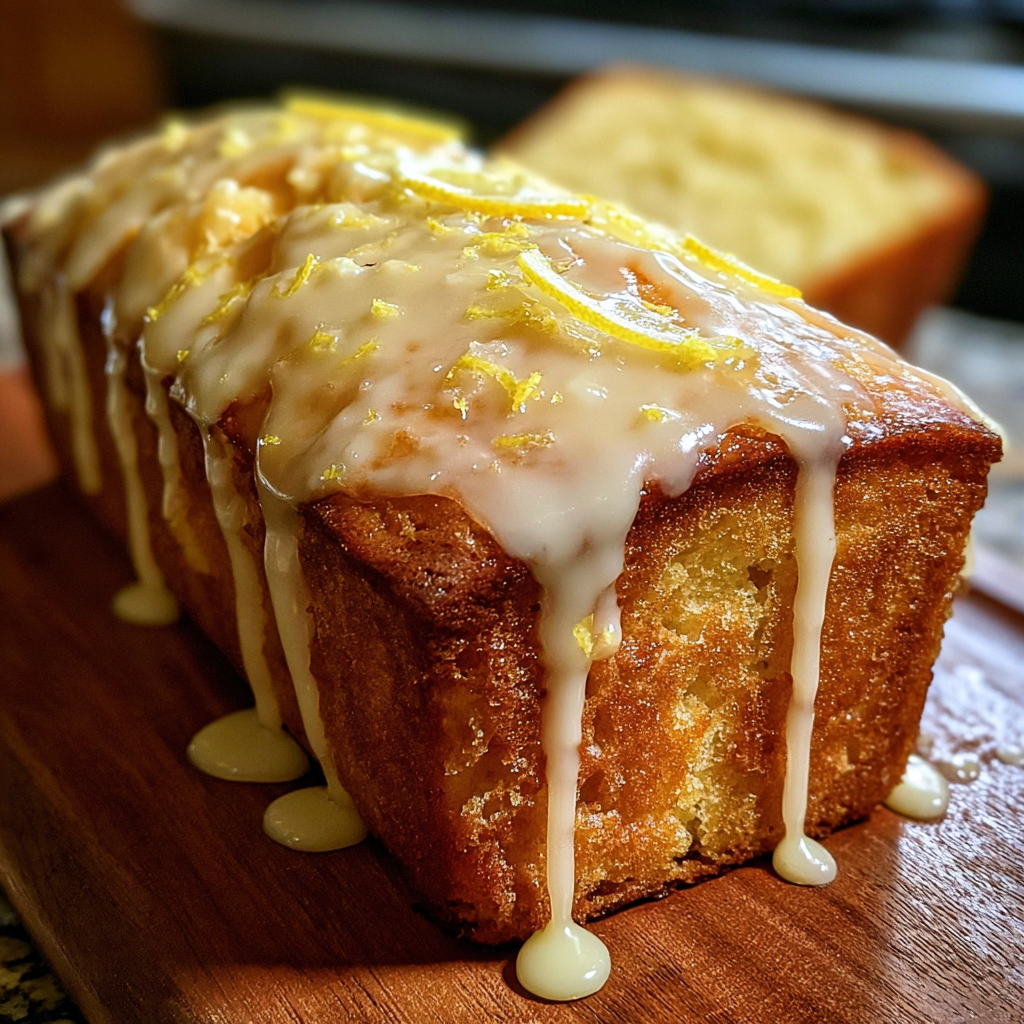
Step 2: Creating the Perfect Cake Batter
The mixing process is crucial for achieving the ideal lemon pound cake texture. Furthermore, following the correct order and technique ensures optimal results.
Cream butter and sugar: Beat softened butter and granulated sugar until light and fluffy, approximately 3-4 minutes. Additionally, this step incorporates air for a tender texture.
Add eggs gradually: Beat in eggs one at a time, ensuring each is fully incorporated before adding the next. Moreover, this prevents the mixture from curdling and maintains smoothness.
Combine dry ingredients: In a separate bowl, whisk together flour, baking powder, baking soda, and salt. Furthermore, this ensures even distribution of leavening agents.
Alternate wet and dry ingredients: Add flour mixture and buttermilk alternately, beginning and ending with flour. Additionally, mix just until combined to prevent tough texture.
Incorporate lemon elements: Gently fold in lemon zest and juice until evenly distributed. Moreover, this final step ensures bright lemon flavor throughout the cake.
Step 3: Baking Your Lemon Buttermilk Pound Cake
Proper baking technique ensures your lemon buttermilk pound cake emerges perfectly golden and completely cooked through.
Pour batter carefully: Transfer mixture to prepared bundt pan, spreading evenly. Additionally, tap pan gently on counter to release air bubbles.
Bake at correct temperature: Place in preheated 325°F oven for 60-70 minutes. Furthermore, avoid opening oven door during first 45 minutes to prevent collapse.
Test for doneness: Insert toothpick into center; it should come out clean or with just a few moist crumbs. Moreover, cake should spring back lightly when touched.
Cool properly: Allow cake to rest in pan for 10 minutes before inverting onto wire rack. Additionally, complete cooling prevents glaze from melting when applied.
Creating the Perfect Lemon Glaze for Your Pound Cake
The lemon glaze transforms this lemon pound cake from delicious to absolutely divine. Moreover, achieving the right consistency ensures beautiful presentation and optimal flavor.
Glaze Ingredients and Ratios
Creating the perfect glaze requires balancing sweetness with tartness:
Powdered sugar: Start with 1-2 cups, depending on desired thickness. Additionally, sifting prevents lumps in the final glaze.
Fresh lemon juice: Add gradually, 2-3 tablespoons initially. Moreover, fresh juice provides superior flavor compared to bottled alternatives.
Lemon zest (optional): Adds extra visual appeal and intense flavor. Furthermore, zest creates beautiful speckles throughout the glaze.
Glaze Preparation Technique
Sift powdered sugar: Remove any lumps for smooth consistency. Additionally, this step prevents grainy texture in the finished glaze.
Add liquid gradually: Whisk in lemon juice slowly until desired consistency is reached. Moreover, you can always add more liquid, but removing excess is difficult.
Adjust consistency: For thicker glaze, add more sugar; for thinner, add more juice. Furthermore, the glaze should coat the back of a spoon but still drip easily.
Apply at right time: Pour over completely cooled cake for best results. Additionally, warm cake will cause glaze to absorb rather than create a beautiful coating.
Pro Tips for the Best Lemon Buttermilk Pound Cake
Achieving bakery-quality results with your lemon buttermilk pound cake requires attention to important details. Moreover, these professional tips ensure consistently excellent outcomes.
Temperature and Timing Tips
Room temperature ingredients: Cold ingredients don’t blend properly and can cause texture issues. Additionally, set eggs and butter out 2-3 hours before baking.
Don’t overbake: Pound cake continues cooking from residual heat after removal from oven. Furthermore, slightly underbaking prevents dryness.
Use oven thermometer: Many ovens run hot or cold, affecting baking time significantly. Moreover, accurate temperature ensures predictable results.
Mixing and Technique Secrets
Don’t overmix: Once flour is added, mix just until combined to prevent tough texture. Additionally, overmixing develops gluten, creating a dense cake.
Scrape bowl frequently: Ensure all ingredients are fully incorporated during creaming process. Moreover, unmixed butter creates uneven texture in finished cake.
Fill pan properly: Use about 2/3 of pan capacity to prevent overflow during baking. Furthermore, even distribution ensures uniform baking.
Storage and Serving Recommendations
Cool completely: Rushing the cooling process can cause structural collapse. Additionally, warm cake is difficult to glaze attractively.
Store properly: Wrap tightly in plastic wrap or store in airtight container. Moreover, this lemon pound cake stays fresh for up to one week.
Serve at room temperature: Cold cake doesn’t showcase flavors optimally. Furthermore, allowing cake to come to room temperature enhances the buttery texture.
Common Mistakes to Avoid When Making Lemon Pound Cake
Even experienced bakers can encounter issues when making lemon buttermilk pound cake. However, understanding common pitfalls helps ensure success every time.
Ingredient-Related Mistakes
Using cold ingredients: This creates lumpy batter and uneven texture. Additionally, cold eggs can cause butter mixture to curdle during mixing.
Substituting ingredients incorrectly: Buttermilk’s acidity is crucial for texture and flavor. Moreover, regular milk doesn’t provide the same tenderizing effect.
Old baking powder: Expired leavening agents won’t provide adequate rise. Furthermore, test baking powder by adding to hot water; it should bubble vigorously.
Mixing and Preparation Errors
Overmixing batter: This develops gluten, creating tough, dense texture. Additionally, fold ingredients gently once flour is added.
Inadequate pan preparation: Insufficient greasing causes sticking and broken cake. Moreover, flouring after greasing provides extra insurance against sticking.
Incorrect oven temperature: Too high heat browns exterior before interior cooks through. Furthermore, too low temperature creates dense, gummy texture.
Baking and Cooling Problems
Opening oven door too early: This causes temperature fluctuations and potential collapse. Additionally, wait at least 45 minutes before checking doneness.
Removing from pan too quickly: Hot cake is fragile and breaks easily. Moreover, cooling in pan for 10 minutes allows structure to set properly.
Glazing too soon: Warm cake causes glaze to absorb rather than create attractive coating. Furthermore, patience ensures beautiful presentation.
Variations and Customizations for Your Lemon Pound Cake
This versatile lemon buttermilk pound cake recipe serves as an excellent foundation for creative variations. Moreover, simple modifications can create entirely new flavor profiles while maintaining the cake’s signature texture.
Citrus Variations
Orange buttermilk pound cake: Replace lemon zest and juice with orange equivalents. Additionally, orange creates a sweeter, less tart flavor profile.
Lime pound cake: Substitute lime zest and juice for tropical twist. Furthermore, lime provides unique aromatic qualities that pair beautifully with the buttery base.
Mixed citrus version: Combine lemon, orange, and lime for complex flavor. Moreover, this variation offers multiple layers of citrus notes in each bite.
Flavor Add-ins
Lemon poppy seed: Add 2 tablespoons poppy seeds for texture and visual appeal. Additionally, poppy seeds provide subtle nutty flavor that complements lemon perfectly.
Lavender lemon: Incorporate 1 teaspoon dried culinary lavender for sophisticated twist. Furthermore, lavender adds floral notes that enhance the cake’s elegance.
Almond lemon: Add 1/2 teaspoon almond extract for deeper flavor complexity. Moreover, almond and lemon create a classic flavor combination.
Glaze Alternatives
Cream cheese glaze: Combine cream cheese, powdered sugar, and lemon juice for richer topping. Additionally, this creates more substantial coating with tangy flavor.
Lemon curd filling: Slice cake horizontally and fill with homemade lemon curd. Furthermore, this creates an elegant layered dessert perfect for special occasions.
Simple dusting: Skip glaze entirely and dust with powdered sugar for lighter option. Moreover, this allows the cake’s natural flavors to shine through.
Nutritional Information and Dietary Modifications
Understanding the nutritional content of lemon buttermilk pound cake helps with meal planning and dietary considerations. Additionally, several modifications can accommodate different dietary needs without sacrificing taste.
Standard Nutritional Profile
A typical slice of this lemon pound cake contains approximately:
• Calories: 320-380 per slice (based on 12 servings) • Fat: 12-15 grams, primarily from butter • Carbohydrates: 55-60 grams from flour and sugar • Protein: 5-6 grams from eggs and flour • Fiber: 1-2 grams from flour
Moreover, the buttermilk provides calcium and probiotics, while lemons contribute vitamin C and antioxidants.
Dietary Modifications
Reduced sugar version: Decrease sugar to 1.5 cups and add extra lemon zest for flavor. Additionally, this reduces calories while maintaining sweetness perception.
Gluten-free adaptation: Replace all-purpose flour with gluten-free blend in equal amounts. Furthermore, add 1/4 teaspoon xanthan gum if blend doesn’t contain it.
Dairy-free option: Substitute butter with vegan alternative and use non-dairy buttermilk. Moreover, coconut oil can replace butter for tropical undertones.
Lower fat version: Replace half the butter with unsweetened applesauce. Additionally, this modification reduces calories while maintaining moisture.
Serving Suggestions and Pairing Ideas
This elegant lemon buttermilk pound cake pairs beautifully with various accompaniments and beverages. Moreover, thoughtful presentation enhances the overall dining experience.
Classic Serving Options
Afternoon tea: Serve thin slices with Earl Grey or chamomile tea. Additionally, the cake’s refined flavor complements traditional tea service perfectly.
Dessert course: Present with fresh berries and whipped cream for elegant finish. Furthermore, seasonal fruits add color and complementary flavors.
Brunch treat: Offer alongside coffee and fresh fruit for special morning meal. Moreover, the cake’s sweetness balances savory brunch items beautifully.
Creative Presentation Ideas
Individual portions: Slice and arrange on individual plates with decorative garnishes. Additionally, mint leaves and berry coulis create restaurant-quality presentation.
Trifle construction: Layer cake pieces with lemon curd and whipped cream in glass bowls. Furthermore, this creates impressive layered dessert perfect for entertaining.
Ice cream accompaniment: Serve warm slices with vanilla bean ice cream. Moreover, the temperature contrast enhances both textures and flavors.
Beverage Pairings
Hot beverages: Coffee, tea, and hot chocolate all complement the cake’s richness. Additionally, herbal teas like lemon verbena create harmonious citrus notes.
Cold drinks: Iced tea, lemonade, and sparkling water cleanse the palate between bites. Furthermore, these beverages enhance the cake’s refreshing qualities.
Wine pairings: Sweet dessert wines or champagne create sophisticated combination. Moreover, the acidity in wine balances the cake’s richness perfectly.
Troubleshooting Common Lemon Pound Cake Issues
Even with careful preparation, issues can arise when baking lemon buttermilk pound cake. However, understanding solutions helps salvage imperfect results and prevent future problems.
Texture Problems
Dense, heavy cake: Usually caused by overmixing or cold ingredients. Additionally, expired baking powder can prevent proper rise.
Solution: Ensure ingredients are room temperature and mix gently once flour is added. Moreover, test leavening agents before using.
Dry cake: Often results from overbaking or insufficient fat content. Furthermore, old flour can absorb more moisture than expected.
Solution: Check doneness early and store properly to retain moisture. Additionally, consider adding extra tablespoon of buttermilk to batter.
Soggy bottom: Typically caused by underbaking or improper cooling. Moreover, humid weather can affect baking times.
Solution: Extend baking time and ensure complete cooling on wire rack. Furthermore, store in airtight container only after completely cool.
Appearance Issues
Cracked top: Usually indicates oven temperature too high or overmixing. Additionally, opening oven door too early can cause cracking.
Solution: Reduce temperature by 25°F and avoid disturbing during first 45 minutes of baking.
Uneven browning: Often caused by incorrect oven rack placement or hot spots. Furthermore, dark pans can cause over-browning.
Solution: Use light-colored pans and position rack in center of oven. Moreover, rotate pan halfway through baking if necessary.
Stuck to pan: Results from inadequate greasing or removing too quickly. Additionally, some bundt pans require extra preparation.
Solution: Grease thoroughly and dust with flour before adding batter. Furthermore, cool in pan for exactly 10 minutes before inverting.
FAQs About Lemon Buttermilk Pound Cake
Q: Can I make this lemon pound cake ahead of time?
A: Absolutely! This lemon buttermilk pound cake actually improves with time as flavors meld together. Moreover, you can bake it up to three days in advance and store wrapped tightly at room temperature. Additionally, the cake freezes beautifully for up to three months when properly wrapped in plastic and foil.
Q: What’s the best substitute for buttermilk in this recipe?
A: While buttermilk creates the ideal texture and flavor, you can create a substitute by adding 1 tablespoon of lemon juice or white vinegar to 1 cup of regular milk. Furthermore, let this mixture sit for 5 minutes before using. However, the authentic tangy flavor and tender texture are best achieved with real buttermilk.
Q: How do I know when my lemon buttermilk pound cake is done?
A: The cake is properly baked when a toothpick inserted into the center comes out clean or with just a few moist crumbs. Additionally, the cake should spring back lightly when touched and pull slightly away from pan sides. Moreover, the internal temperature should reach 200-205°F on an instant-read thermometer.
Q: Can I use a different pan instead of a bundt pan?
A: Yes, you can adapt this recipe for different pans, though baking times will vary. Additionally, two 9×5-inch loaf pans work well, requiring about 45-55 minutes baking time. Furthermore, a 10-inch tube pan or even a 9×13-inch rectangular pan can be used with adjusted timing.
Q: Why did my lemon glaze turn out too thick or too thin?
A: Glaze consistency depends on the powdered sugar to liquid ratio. Moreover, humidity can affect how much liquid the sugar absorbs. Additionally, if your glaze is too thick, add lemon juice one teaspoon at a time. Furthermore, if it’s too thin, gradually whisk in more sifted powdered sugar until desired consistency is reached.
Q: How should I store leftover lemon pound cake?
A: Store your lemon buttermilk pound cake in an airtight container at room temperature for up to one week. Additionally, refrigeration extends storage life but can dry out the texture slightly. Moreover, bring refrigerated cake to room temperature before serving for best flavor and texture.
Q: Can I double this recipe for a larger crowd?
A: This recipe doubles easily, though you’ll need two bundt pans or adjust pan sizes accordingly. Additionally, mixing time may increase slightly when working with larger quantities. Furthermore, baking times remain the same when using pans of similar size, but check doneness carefully.
Q: What causes my pound cake to have a tunnel or large holes?
A: Tunnels typically result from overmixing the batter, especially after adding flour. Additionally, old or too much baking powder can cause irregular rising and holes. Moreover, ensure you’re measuring flour correctly by spooning into cup and leveling rather than scooping directly.
Conclusion
This exceptional lemon buttermilk pound cake with lemon glaze represents the perfect harmony of traditional baking techniques and bright, modern flavors. Moreover, the combination of tangy buttermilk, fresh lemon, and rich butter creates a dessert that’s both comforting and sophisticated.
Furthermore, this recipe’s versatility makes it suitable for everything from casual family dinners to elegant entertaining. Additionally, the straightforward technique ensures success for bakers of all skill levels, while the professional tips help achieve bakery-quality results at home.
Print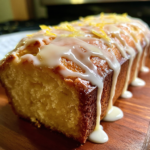
The Ultimate Lemon Buttermilk Pound Cake with Lemon Glaze: A Perfect Citrus Delight
- Total Time: 1 hr 25 mins
- Yield: 1 bundt cake (12–16 slices) 1x
- Diet: Vegetarian
Description
This Lemon Buttermilk Pound Cake is wonderfully moist, rich, and bursting with fresh citrus flavor. Finished with a sweet-tart lemon glaze, it’s the perfect treat for brunch, dessert, or afternoon tea that everyone will love.
Ingredients
- 1 cup unsalted butter, softened
- 2 cups granulated sugar
- 4 large eggs
- 3 cups all-purpose flour
- 1/2 teaspoon baking powder
- 1/2 teaspoon baking soda
- 1/2 teaspoon salt
- 1 cup buttermilk
- Zest of 2 lemons
- Juice of 1 lemon
- For Lemon Glaze:
- 1–1.5 cups powdered sugar
- 2–3 tablespoons fresh lemon juice
Instructions
- Preheat oven to 325°F (160°C). Grease and flour a 10-inch bundt pan.
- Cream the softened butter and granulated sugar in a large bowl until light and fluffy.
- Beat in the eggs one at a time, mixing well after each addition.
- In a separate bowl, whisk together the flour, baking powder, baking soda, and salt.
- Gradually add the dry ingredients to the creamed mixture, alternating with buttermilk, starting and ending with the dry ingredients. Mix until just combined.
- Stir in the lemon zest and lemon juice.
- Pour the batter into the prepared bundt pan and smooth the top.
- Bake for 60–70 minutes or until a toothpick inserted into the center comes out clean.
- Cool in the pan for 10 minutes, then transfer to a wire rack to cool completely.
- Whisk powdered sugar and lemon juice to make the glaze, then drizzle over the cooled cake.
Notes
- Substitute buttermilk with 1 cup milk plus 1 tablespoon lemon juice or vinegar if needed.
- For extra lemon flavor, add 1 teaspoon of lemon extract to the batter.
- Let the cake cool completely before glazing to prevent the glaze from melting.
- Store in an airtight container at room temperature for up to 3 days, or refrigerate for longer freshness.
- Prep Time: 20 mins
- Cook Time: 1 hr 5 mins
- Category: Dessert
- Method: Baking
- Cuisine: American
Nutrition
- Serving Size: 1 slice (based on 16 slices)
- Calories: 320 kcal
- Sugar: 28 g
- Sodium: 160 mg
- Fat: 13 g
- Saturated Fat: 8 g
- Unsaturated Fat: 4 g
- Trans Fat: 0 g
- Carbohydrates: 47 g
- Fiber: 0.8 g
- Protein: 4.5 g
- Cholesterol: 75 mg
Keywords: lemon pound cake, lemon buttermilk cake, bundt cake, lemon glaze, moist lemon dessert, homemade pound cake, easy lemon cake, citrus dessert


